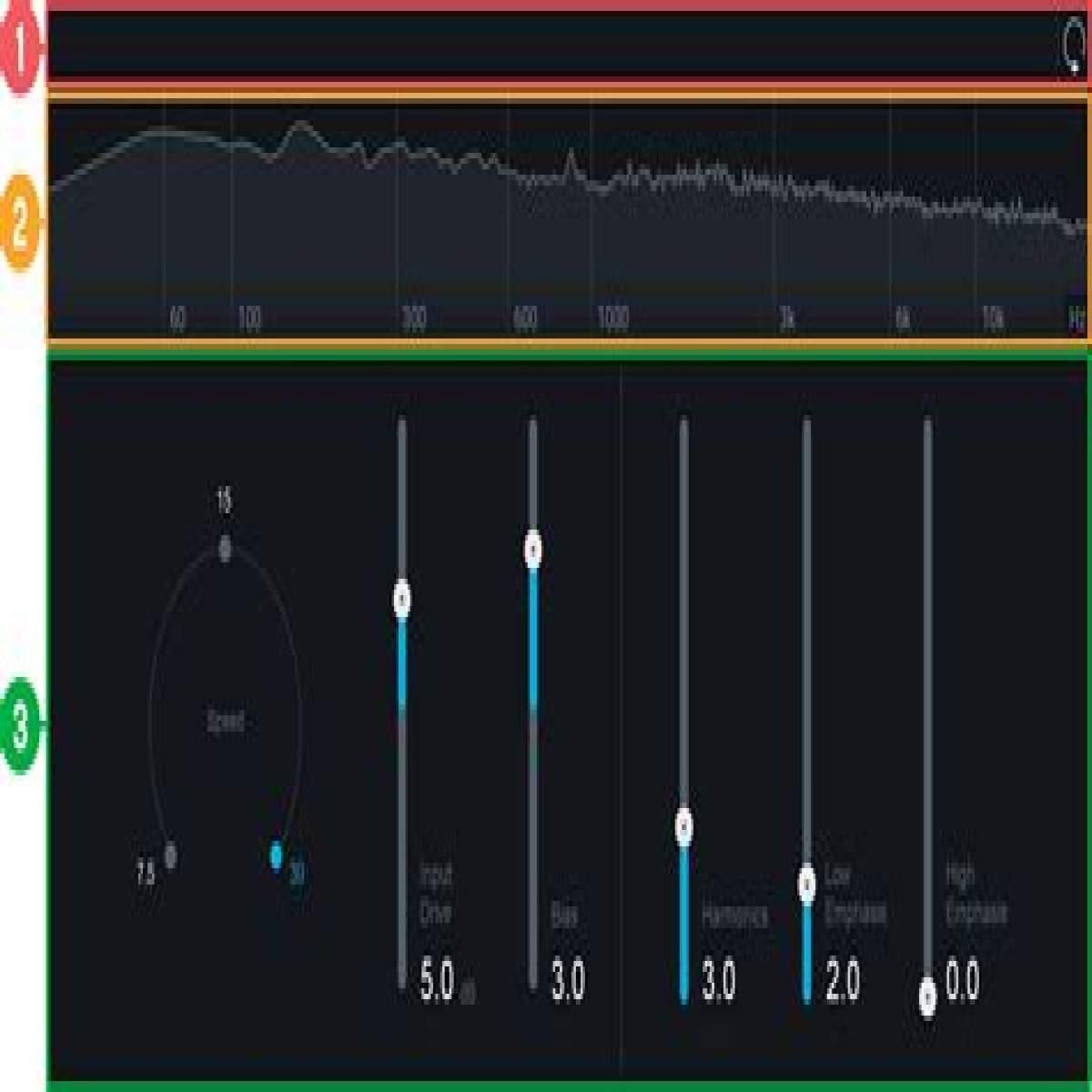Table of Contents
Overview
The Vintage Tape module is inspired by a well-maintained Studer A810 two-track tape deck, a clean and accurate machine perfect for mastering. Add the frequency response (magnitude plus phase) and saturation characteristics of magnetic tape without the crosstalk, hiss, wow, and flutter that could ruin a master.
The Vintage Tape module interface is divided into the following sections:
The module header includes a Reset control:
Returns all module controls to their default values.
Spectrum Analyzer
Displays the magnitude (amplitude, in decibels) of the signal across the frequency spectrum in real-time. The spectrum analyzer displays the output signal of Ozone.
Controls
The Vintage Tape module includes the following controls:
Speed
Sets the tape speed in inches per second (IPS). You can choose between the following tape speeds in the Vintage Tape: 7.5, 15, or 30 IPS. In a hardware tape machine, this setting determines the rate at which the magnetic tape physically moves past the tape head during playback or recording. Faster speeds can improve high frequency response and overall quality. Slower speeds can cause a uniform decrease in the linear frequency response of tape, a shift in background noise toward lower frequencies, and increased background noise.
Input drive
Adjusts the gain of the input signal before tape emulation. The Vintage Tape module internally compensates for gain changes as you make adjustments, in order to avoid large or unexpected jumps in output level.
Bias
Adjusts the shape of the distortion curve. Negative bias values will boost high frequency content, resulting in more high frequency distortion than postive bias values. Positive bias values can begin to limit the dynamic range of the signal, lending a different type of saturation to the output.
Harmonics
Adjusts the amount of even-order harmonic distortion added to the output signal. Increasing even-order harmonic distortion can help to emulate the character of AC bias design inaccuracies or the distortion from machine electronics.
Low Emphasis
Adjusts the gain and shape of the low end “head bump” (resonant peak) of the tape.
- Lower Values: Removes the resonant peak, flattening out the frequency response while maintaining the low-end rolloff. This can help achieve the warmth of analog without adding mud or too much bass.
- Higher Values: Boosts the resonant peak up to 10dB, adding low end punch and emphasis.
High Emphasis
Compensates for high-frequency losses to give your audio extra energy without being too harsh or bright. The default setting of 4.0 gives you an authentic, close-to-flat high frequency response.
- Lower Values: Adds gentle, roll-off at high-frequencies.
- Higher Values: Adds a high-end shimmer.
Ozone 9.12.1
